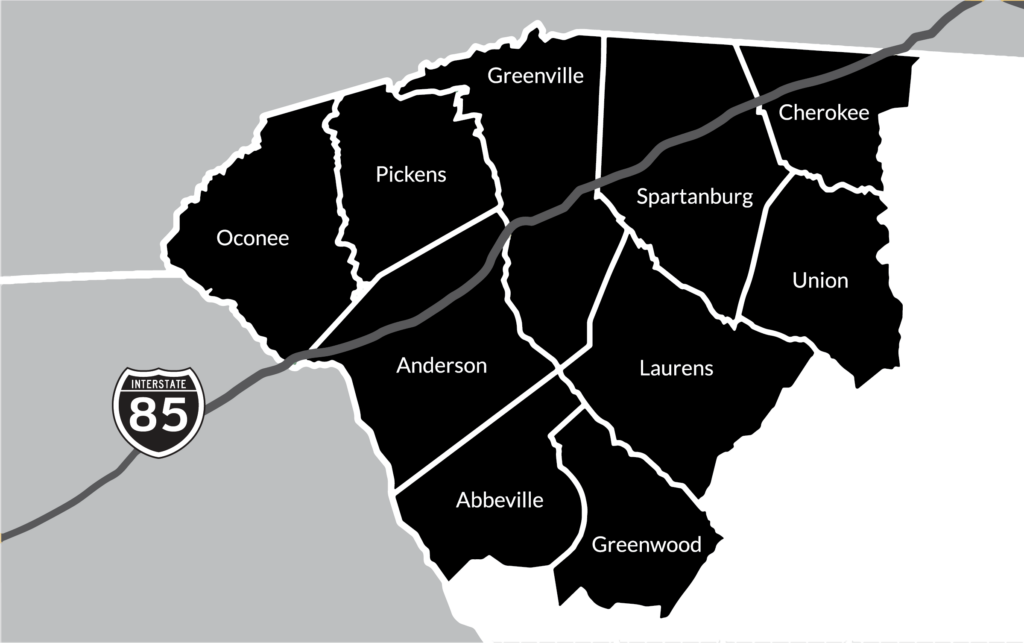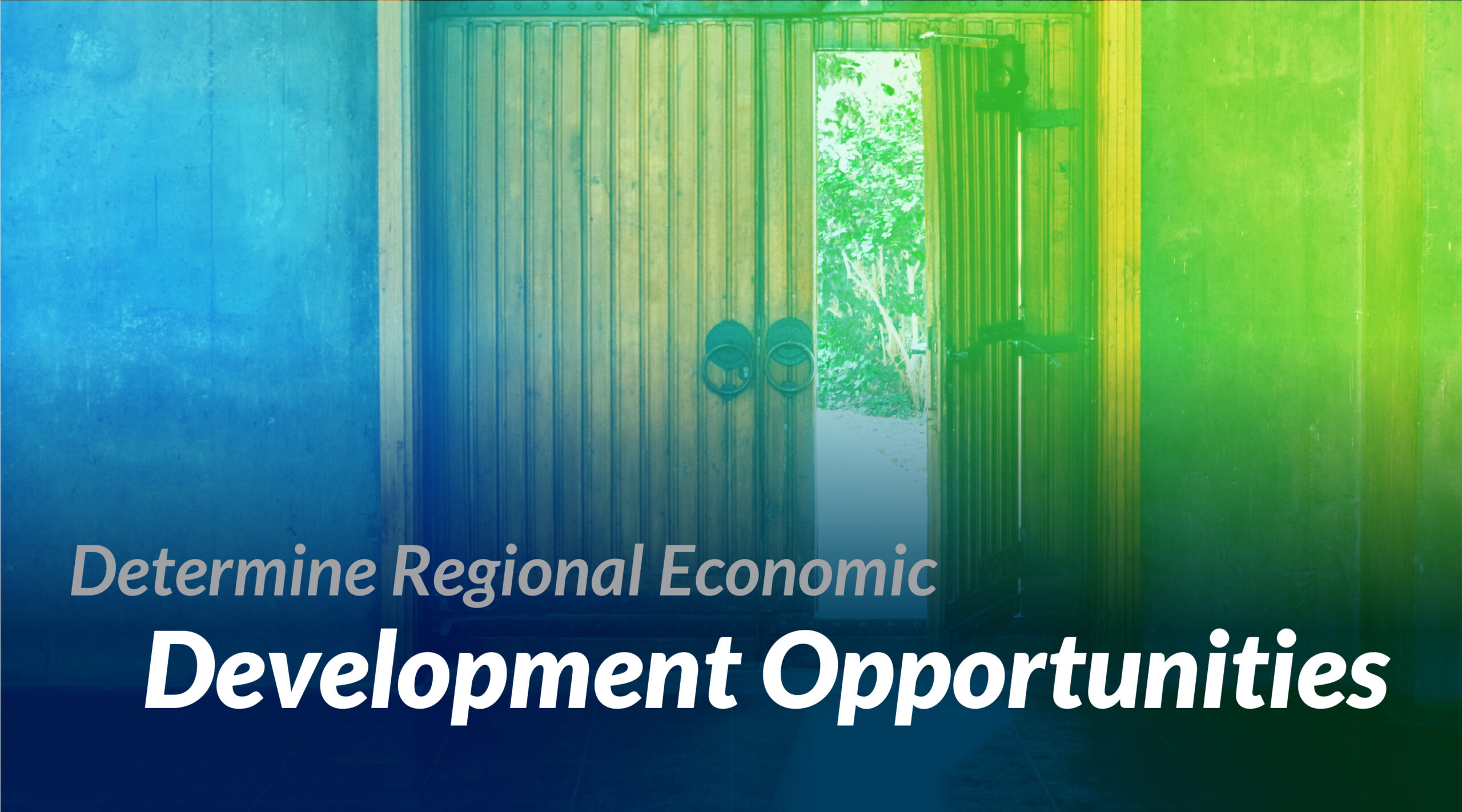Let’s start with some simple questions: why are there farmers’ markets and craft shows? And why do fast food restaurants and car dealerships often cluster together in one area? After all, the farmers’ tomatoes compete with each other, and, while the artists’ paintings and pottery are unique, they still compete with each other for the customers’ dollars. While it may be a bit of a stretch to call different fast food restaurants “unique,” they surely compete for the customers’ dollars, as do the car dealerships. So why do competitors want to be next to one another?
There are a couple of reasons we can cite that are relevant to our discussion here. The first one is visibility. Customers seeking fresh produce or arts and crafts are much more likely to know where and when the farmers’ markets and craft shows are being held, as opposed to where individual farmers or artists are selling their goods. The second reason we can call the scale effect. When competitors cluster together they might have to compete with each other more fiercely, but the sheer volume of customers increases the likelihood that each vendor will sell more.
Visibility and the scale effect are two reasons why regionalism is becoming more and more popular as an economic development strategy. What is regionalism in economic development? Regionalism is the term used when different political jurisdictions (communities, counties) in the same area cooperate for community or economic development purposes. The most common purpose is marketing.
Pop quiz: where is Pickens County, South Carolina and what comes to mind when someone mentions it? Is it on the coast with beaches and low country boils, is it in the mid-state with peaches, or in the western part of the state bordering the Blue Ridge Mountains? If you were in charge of economic development in Pickens County, how would you get your message out to the world (or at least those industries you are interested in) that Pickens County is a great place to locate a business and live.? That would be challenging, especially with a limited marketing budget.

If you knew that Pickens County is in Upstate South Carolina, that its largest city is Easley, and that it is part of the Greenville MSA, you aced the quiz. For the 99% of you non South Carolina residents who did not ace the quiz, here is a make-up test: where is Upstate South Carolina? Everybody passes! If you were trying to market Pickens County, you would surely say in your message that it is located in Upstate South Carolina, but you would still have a big problem: a limited marketing budget. What if you banded together with your neighboring counties to get the word out about the advantages of the Upstate region to a much larger audience with a much larger marketing budget?
That brings us back to the farmers’ market and craft show analogy. If you increase the marketing exposure of Pickens County by a factor of ten through a regional marketing alliance, you may have to “compete” with your neighboring counties for new investment, but there would be more businesses looking at the Upstate and you would likely land your share of them. Even if a company does not locate in Pickens, the county will still benefit in many ways. Some employees of a new company might choose to live in Pickens County, generating property and sales tax revenues, and the new company might buy some of its inputs and services from firms in Pickens County. There may be other benefits from cooperating with your neighboring counties such as jointly developing a world-class business park that you wouldn’t be able to afford as just one county. It is for these reasons that the Upstate South Carolina Alliance was formed several years ago.
Counties in Upstate South Carolina have many positive marketing attributes in common including being on the I-85 corridor and proximity to the Greenville-Spartanburg-Anderson combined metro area. Certainly there are many multi-county areas in the U.S. that do not share many common attributes, and would not have as many reasons and benefits from forming a regional alliance for economic development. Furthermore, not all regions have the political will to form regional alliances. Some elected officials view the counties next to them as nothing but competition in Friday night football and economic development. They do not understand the potential marketing benefits.
As part of the evaluation of your community – perhaps as part of the whole strategic planning process including public input, a strengths and weaknesses assessment, data analysis and visioning – we would urge you to assess the status or potential for regional community and economic development cooperation. Another example of regional cooperation for community and economic development is Tupelo/Lee County, Mississippi, which rebooted itself at least two times. The first reboot was from agriculture to manufacturing, and the second was from traditional manufacturing to advanced manufacturing. They accomplished the second reboot through working with neighboring counties to develop a state-of-the-art industrial park and develop an advanced manufacturing curriculum at the community college serving the region. As a result, they landed a large vehicle assembly plant.
First step in assessing the status of a regional partnership in economic development is to simply determine if you have one and what counties and cities are involved in it. The best way to do this is simply to ask your local economic development organization(s) about that. It would also be helpful to get information from elected officials and local government managers on other ways your county or cities are cooperating such as regional infrastructure (water and sewer, other), regional airports (commercial or general aviation), etc. Other areas for regional cooperation include workforce development and, as mentioned above, improving technical training and higher education resources in the region.
If your community is not part of a regional alliance, inquire as to why not and establish reasons that one might be beneficial. Talk to local economic developers and elected officials in your community about this. See if you can get the officials in your community interested in talking to their counterparts in surrounding counties. State departments of economic development are also good sources of information, as they are generally supportive of regional partnerships because they have many marketing benefits and increase the likelihood that companies will locate in them, thereby increasing the state’s success in economic development.
If you do live in a country that is part of a regional alliance, find out the following information:
- Members of the regional alliance
- When was it formed?
- How is it staffed?
- Where is the office located? Satellite offices?
- Key economic development contacts in each member county
- Budget and financial support. How do the counties contribute (flat fee for all counties, or based on other criteria such as population)?
- Is the organization a public/private partnership?
- Board of directors: who is on it and how is the board composition decided?
- What is the marketing budget and the marketing plan? How is this determined? For both “traditional economic development (the three legs of the stool) but also for tourism promotion.
- Does the regional organization have a strategic plan? How old is it and is it updated regularly?
- Results – data on new jobs and growth in the region and in each county. In what other ways does the alliance measure success and return on investment?
- In what other ways does the regional alliance promote inter-county cooperation for community and economic development – regional industrial/business parks? Regional infrastructure (e.g. water and sewer)?
Having this information will help your community assess the effectiveness of a regional partnership and serve as a basis for a discussion on how the performance and benefits could be improved.
If your community is not part of a regional alliance, then you can start considering the above questions and start the ball rolling on a regional partnership for your community.
![2021 Prosperous Places Logo [TM]](https://www.prosperousplaces.org/wp-content/uploads/2021/02/20210205_JI_PPTM-Logo.png)



